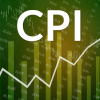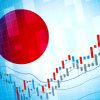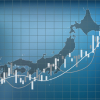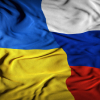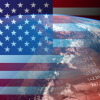Insights
New Zealand Equity Monthly – October 2022
A notable feature of global equities this year has been the significant divergence seen among indices. New Zealand’s S&P/NZX 50 Index has provided an example of this by following a different track to the overall global trend so far.
New Zealand Fixed Income Monthly – October 2022
As in the rest of the world, consumers in New Zealand are facing significant headwinds as the cost of living rises. The consensus was for inflation to decline rapidly after peaking, but the data now show that New Zealand’s inflation is becoming significantly entrenched, broad based, and domestically driven.
Navigating Japan Equities: Monthly Insights from Tokyo (November 2022)
We discuss Japan’s recent currency market interventions from an equity market perspective; we also share our thoughts on steadily rising inflation after a surge in the September core CPI.
Why convexity matters
Yields have moved significantly this year, challenging the assumption that the relationship between a bond’s price and yield is linear. We discuss convexity, which measures how sensitive a bond’s duration is to yield changes, and its importance under the current conditions.
Inbound tourism: An immediate boost for Japan
As Japanese Prime Minister Fumio Kishida focuses on various economic initiatives to shore up his support ratings, the revival of inbound tourism is seen as a measure that can provide the economy with an immediate boost.
The potential implications of China’s 20th Party Congress
China’s 20th Party Congress ended on 23 October with President Xi Jinping winning an unprecedented third term as expected. We provide a brief analysis of the Congress and the impact it could have on China’s zero-COVID policy and the capital markets.
Global Unconstrained Bond Fund Q4 2022 Outlook
We present our Q4 2022 outlook for the Global Unconstrained Bond Strategy which incorporates our core markets, emerging markets and global credit views.
The future looks bright for Asia’s equity markets
Asia continues to offer opportunities in terms of attractive companies; on a relative basis, Asian markets look set to outperform as the region becomes an even more important part of the global economy.
Global Equity Quarterly (Q3 2022)
The low for this bear market could be a lot closer at hand now than it was, with equity valuations having fallen considerably. We remain focused upon assessing our companies’ ability to deliver earnings expectations and cash generation. These give us confidence in the long-term, even if shorter-term developments remain volatile.
New Zealand Fixed Income Monthly – September 2022
Compared to its global peers the New Zealand bond market was stable in September. In the coming months, the New Zealand market is unlikely to see UK levels of volatility; one factor behind the turmoil in the UK, for example, was the country’s very high rate of inflation and associated pressure from energy issues. Uncertainty over a potentially large public fiscal outlay was similarly UK-specific.
New Zealand Equity Monthly – September 2022
The recent reporting season showed that New Zealand’s “gentailers” (companies that both generate and sell energy) remain committed to developing renewable generation capacity, with five such projects currently under construction. However, a rise in the cost of developing such capacity in the past 12 months is creating a significant challenge for gentailers.
On the Ground in Asia-Monthly Insights: Asian Fixed Income-September 2022
Going forward, despite some expected moderation amidst the slowdown in global growth, we believe that growth and corporate credit fundamentals will remain sufficiently robust to prevent a meaningful widening of credit spreads. However, some modest widening may be expected in the near term, with the benchmark spread level at the tighter end of the expected medium-term range and given the plethora of global market risks.
Balancing Act-Monthly insights: Multi-Asset Team-October 2022
Central bank tightening is beginning to have an impact, but less evidently in terms of easing inflationary pressures than in causing strains on the global financial system. Policymakers are beginning to blink—first with Japan intervening to support the yen for the first time since 1998, followed by the Bank of England (BOE) returning to quantitative easing (and postponing planned quantitative tightening) to ease pressures on the UK pension system following an ill-advised fiscal easing by new UK government leadership.
Harvesting Growth, Harnessing Change - Monthly Insights: Asian Equity-September 2022
Rising interest rates and inflation woes continued to weigh on regional and global markets. US consumer prices registered above expectations with the August consumer price index (CPI) jumping 8.3% year-on-year (YoY). The tight labour market made further case for a rate hike, culminating in a 75-basis-point (bps) interest rate hike by the US Federal Reserve (Fed).
Investing in a multipolar world
Between still high levels of inflation, fast-tightening central banks, a growing energy crisis in Europe and slow growth in China, it is easy to imagine a bleak growth outlook. But these difficult dynamics also harbour opportunities often masked in exaggerated mispricing based on fear and confusion.
Navigating Japan Equities: Monthly Insights from Tokyo (October 2022)
This month we analyse what immediate impact the full reopening of Japan could have on the economy and markets; we also review the factors that may make Prime Minister Kishida’s “asset-income doubling plan” more effective in the long term.
A big comeback: Rising fortunes of Asia’s small caps
Global Investment Committee’s Outlook: Negative 4Q, then central banks relent and markets rebound
Our scenario is fairly ugly for the 4Q, but has a strong silver lining thereafter. We are not optimistic about the global economy and investor returns reverting to normal for an extended period, but there should be clear intermediate term relief and pockets of strong outperformance due to idiosyncratic advantages.
Enhancing returns from opportunities in global credit
The current environment in fixed income is definitely challenging for investors as the rate cycle has turned. However, we believe that by unlocking the full performance potential of the different credit asset classes achieving positive absolute performance is still possible.
Balancing Act-Monthly insights: Multi-Asset Team-September 2022
The world is fast entering the adjustment phase as deglobalisation is accelerating, requiring new solutions and investment to clear new imbalances from energy supply to labour and eventually normalise inflation.
ESG through an Asian equity lens
In recent years, the increased focus on ESG has validated our beliefs. Yet, the complex and fast-changing economies and societies that make up Asia continue to be a challenge confronting investors looking to apply ESG analysis across Asian asset classes. This is a good thing, as investors who can do this successfully will likely add even more value to alpha generation.
On the Ground in Asia-Monthly Insights: Asian Fixed Income-August 2022
Inflationary pressures continued to remain elevated in July, as the headline CPI numbers in South Korea, Singapore, Indonesia and the Philippines increased, while those of Thailand and India moderated. During the month, the central banks of Thailand, Indonesia, the Philippines, South Korea and India raised their key policy rates.
Harvesting Growth, Harnessing Change - Monthly Insights: Asian Equity-August 2022
The regional index of the MSCI AC Asia ex Japan in August was flat at 0.0% in US dollar terms, recovering after falling into negative territory earlier. The North Asian region was weighed down by foreign currency effects, trailing behind its ASEAN counterpart. India benefitted from its rate hike and lower oil prices.
New Zealand Equity Monthly – August 2022
In an encouraging sign for New Zealand equities, the benchmark NZX 50 Index ended August approximately 10% higher compared to the lows it saw in June, when it dropped below the 11,000 level for the first time in two years. However, the market still faces challenges given that at the end of August the index was also down about 10% compared to the start of 2022.
New Zealand Fixed Income Monthly – August 2022
New Zealand bonds went through a tough period in August. The rough patch reflects continuing uncertainty, with the bond market undecided about whether it should focus on inflation itself or pay more specific attention to the measures that central banks are adopting to deal with it.
Navigating Japan Equities: Monthly Insights from Tokyo (September 2022)
This month we discuss the factors behind Japan’s high level of share buybacks; we also look at the economic implications of COVID in the wake of a particularly large infection wave.
Japan Value Insights: Creating economic wealth by utilising forest resources
Utilising and regenerating Japan’s ample forest resources by promoting a “wood cycle” could contribute to the creation of economic wealth and a net-zero carbon future.
Japan’s “show me the money” corporate governance: 2Q record high
The just-released 2Q CY22 data on aggregate corporate profits in Japan was very positive, with the overall corporate recurring pre-tax profit margin hitting a record high on a four quarter average.
Global Equity Quarterly (Q2 2022)
Our belief is that we have moved into a new regime where inflation will be structurally higher despite the anchors of high debt burdens, ageing societies and ongoing technological disruption.
On the Ground in Asia-Monthly Insights: Asian Fixed Income-July 2022
We are taking a more constructive view in duration overall, as we believe that the markets have largely priced in hawkish Fed expectations. Among the low-yielding countries, we prefer Singapore and Hong Kong, while we like Malaysia and India among the mid- to high-yielding countries. On currencies, we maintain our preference for the Singapore dollar.
Future Quality Insights – August 2022 - Halgos and three steps for navigating the road ahead
It may be easy to become gloomy after the drawdown of the last few months. But we believe that there are plenty of reasons to be optimistic about the prospects for compounding your future capital from today’s levels, if you take into account the following three steps: 1) recognise that that we have shifted to a different road type, and it is rougher and more variable; 2) realise that this new road may be best travelled with different vehicles; and 3) improve your probabilities by sticking to a few enduring principles.
Balancing Act-Monthly insights: Multi-Asset Team-August 2022
The shift in market narratives continues to gather pace, matching the increase in volatility of the economic cycle seen since the beginning of the pandemic. Central banks are generally aiming to smooth the economic cycle, but this time they may be adding to the volatility of the cycle instead.
Harvesting Growth, Harnessing Change - Monthly Insights: Asian Equity-July 2022
Higher commodity prices impacted returns in Asia, while a slip in prices of crude oil and metals benefitted many Asian nations. We expect the future trajectory of inflation to dictate the path of interest rates, which in turn is seen determining economic growth globally.
Asia corporate high yield: Market review and outlook
Asia high yield credit had a tough start to 2022, succumbing to heavy selling pressure . Apart from geopolitical tensions, tighter financial conditions and rising recession risk in major developed economies, sentiment toward Asia HY has been heavily weighed down by sustained stress in China’s property sector. Going forward, we believe the pace of correction will moderate.
Navigating Japan Equities: Monthly Insights from Tokyo (August 2022)
We take a look at the short and long term prospects of Abenomics without Abe, and we also discuss the recent trend of an increasing number of Japanese companies passing on higher costs to consumers and whether this phenomenon can continue.
New Zealand Equity Monthly – July 2022
This month we focus on two ESG-linked themes that generate a significant amount of investor interest: carbon neutrality and modern slavery.
New Zealand Fixed Income Monthly – July 2022
As we have already mentioned several times, it has been a very tough year for New Zealand bonds. Although there is perhaps light at the end of the tunnel after the market hit a very low point; in our view, good quality assets could outperform cash over the medium term.
Global Unconstrained Bond Fund Q3 2022 Outlook
We present our Q3 2022 outlook for the Global Unconstrained Bond Strategy which incorporates our core markets, emerging markets and global credit views.
Asia bonds: Calmer seas ahead
We explain why we are more positive on Asia bonds than we were at the beginning of 2022. To begin with, inflation in Asia is less severe compared to other regions, lessening the need for Asian central banks to tighten aggressively. This makes Asia bonds attractive from a real yield perspective.
Balancing Act-Monthly insights: Multi-Asset Team-July 2022
The East and West appear to be headed in different directions. The East may benefit from China’s easing and supportive growth characteristics. Meanwhile, the West is mired in slowing growth, excessive levels of inflation and central banks ever more eager to take down inflation through conventional tool kits designed to slow demand.
On the Ground in Asia-Monthly Insights: Asian Fixed Income-June 2022
Inflationary pressures accelerated in May across the region, due to higher transport and food prices. We maintain our preference for Malaysian bonds, as we believe that inflation will be better contained in Malaysia compared to other countries.
New Zealand Fixed Income Monthly – June 2022
As New Zealand grapples with inflation and the spectre of a recession, we highlight the impact increasing mortgage rates may have on consumer spending. This is an important theme as it ties in with how we need to consider absolute interest rate levels.
New Zealand Equity Monthly – June 2022
As in the rest of the world, times are tough for New Zealand’s economy. Even so, given that stagflation occurs when higher inflation is combined with slower economic growth and rising unemployment, New Zealand is contending with the negative growth and inflationary aspects of stagflation without the accompanying unemployment issues.
Our view on Japan’s upper house election
As it often is when Japan’s Liberal Democratic Party wins an election by an impressive amount, the initial equity market reaction was positive. But the ramifications of the ruling party’s upper house election victory will in the intermediate term be a function of what happens to the global economy and geopolitics in the months and quarters ahead.
Navigating Japan Equities: Monthly Insights from Tokyo (July 2022)
We take a look at why the Bank of Japan is likely to stick to its easy monetary policy even as other central banks embark on policy tightening; we also highlight the signs of a full-fledged capex recovery taking place in Japan.
Chinese EVs and their potential from an investment perspective
There has been remarkable progress in electric vehicle (EV) technology and its acceptance globally. We believe that Chinese EVs are set to lead the world in this area as technological innovation, demand, government policy and consumer behaviour have put China ahead of Europe and the US.
Fears of a recession and the US CPI hitting a four-decade high of 8.6% year-on-year in May rippled through various economies. Asian markets took heed from the multiple headwinds in the US, with inflation being a common theme across the region. For the month, the MSCI AC Asia ex Japan Index fell by 4.5% in US dollar terms.
Amid today’s incessant chatter of rising inflation and global recession fears, we identify three high conviction themes driving a growth renaissance in ASEAN: electric vehicles (EVs), digitalisation and a revival by the old industrial economy.
“Stagflation-lite” coupled with a severe geopolitical crisis was much worse for equities than we expected, but most of the bad news is priced in, so the prospect for global economies and equities in aggregate should improve. While we expect global GDP to moderately underperform consensus, it should skirt recession and positively surprise equity markets, which increasingly have priced in recessionary conditions.
Balancing Act-Monthly insights: Multi-Asset Team-June 2022
Defined as negative growth for two consecutive quarters, a recession is certainly in the realm of possibilities (if not probable). However, it may be more a reflection of continued extreme economic volatility following the COVID-19 pandemic, rather than a conventional recession that follows an extended period of economic expansion.
Japan’s “new form of capitalism” in review
We review the “new form of capitalism”, a government plan to boost economic growth initiated by Japanese Prime Minister Fumio Kishida, who is enjoying a high public approval rating ahead of a closely watched upper house election.
New Zealand Equity Monthly – May 2022
Recent results in the New Zealand retirement sector have been strong almost across the board, with operators of retirement villages posting high sales of both new stock and existing units. Independent valuations of retirement village assets have also increased significantly across all operators.
New Zealand Fixed Income Monthly – May 2022
The beleaguered New Zealand bond market received some respite in May, while the Reserve Bank of New Zealand raised the Official Cash Rate by 50 basis points to 2%, with the market pricing in the central bank hiking rates again in July and August.
On the Ground in Asia-Monthly Insights: Asian Fixed Income-May 2022
We prefer Malaysian bonds, as we are of the view that inflation will be relatively better contained in Malaysia. We are keeping a neutral view on duration for low-yielding regions and countries such as Hong Kong, Singapore and Thailand. On currencies, we favour the Chinese yuan, Thai baht and Singapore dollar to Philippine peso and Indian rupee.
Navigating Japan Equities: Monthly Insights from Tokyo (June 2022)
This month we explain why losses by Japanese equities so far in 2022 have been limited relative to their peers; we also assess the positive impact a return of inbound tourism could have on Japan’s economy and markets.
Asian equity markets rose marginally in May, boosted by Shanghai’s plan to lift COVID-19 restrictions, even as the US Federal Reserve raised its benchmark overnight interest rate by 50 basis points. For the month, the MSCI AC Asia ex Japan Index rose by 0.5% in US dollar terms.
Japan’s “show me the money” corporate governance: 1Q record high
The just-released 1Q CY22 data on aggregate corporate profits in Japan was positive, with the overall corporate recurring pre-tax profit margin hitting a record high on a four quarter average. Both the non-financial service and manufacturing sectors contributed, with the latter surging to another record high. Note that the strong results occurred despite quite weak GDP, further proving the long-held theme of this report that profit margins remain on a structural uptrend despite sluggish domestic GDP growth, as shown in the charts below. Increased pricing power, coupled with improving corporate technological prowess and efficiency, should be credited for this, but improving global economic growth certainly was also a major factor.
For the last two centuries energy revolutions have created extensive platforms for subsequent technologies to drive wealth creation and raise living standards across the world. And this decade heralds the start of an energy revolution providing investors with lots of opportunities—the beginning of an energy broadband infrastructure boom.
Harnessing Change: An investment philosophy for Asia
Change is both more prevalent and significant in Asian markets. We believe that seeking to understand it is essential to deliver sustainable returns.
Balancing Act-Monthly insights: Multi-Asset Team-May 2022
The outlook is increasingly clouded as markets come to terms with a Fed that may do “whatever it takes” to contain inflation. Given that current inflationary pressures appear to be mainly driven by supply-side constraints and rising energy prices, it follows that the Fed would need to be willing to take the economy into a recession to meet its mandate.
On the Ground in Asia-Monthly Insights: Asian Fixed Income-April 2022
Increasing energy and food prices were the main factors that pushed most regional headline CPI prints higher in March. The Monetary Authority of Singapore aggressively tightened FX policy while China stepped up both monetary and fiscal policy support as the country struggled to contain its worst COVID-19 outbreak in two years.
Asian markets were downcast in April as investors were concerned about inflation and the likelihood of a larger-than-expected rate hike by the US Federal Reserve. For the month, the MSCI AC Asia ex Japan Index fell by 5.2% in US dollar (USD) terms.
New Zealand Fixed Income Monthly – April 2022
It has still been a tough year so far for New Zealand bonds amid pressure from inflation. That said, the market in New Zealand has been an outperformer among global peers since the beginning of 2022.
New Zealand Equity Monthly – April 2022
Despite fearmongering on demographics, Japan’s business has soared
Pundits need to be careful about scaring people regarding Japan and, thus, harming its economic future. This is especially true regarding recent high profile, wildly exaggerated tweets about demographics, a decades-old theme; clearly, this is a challenging theme, but Japan is certainly not going to disappear.
Global Unconstrained Bond Strategy Q2 2022 Outlook
We present our Q2 2022 outlook for the Global Unconstrained Bond Strategy which incorporates our core markets, emerging markets and global credit views.
Navigating Japan Equities: Monthly Insights from Tokyo (May 2022)
We discuss the implications of the weak yen, now considered by some as a menace rather than a blessing, for the Japanese market and economy. We also explain the potential impact of higher energy and commodity prices.
Ground-level observations from China
A trip back to China provided an opportunity to experience first-hand the impact innovative technology and digitalisation is having on a fast-changing urban society.
Balancing Act-Monthly insights: Multi-Asset Team-April 2022
Relief rallies are always encouraging but do not necessarily portray parting clouds for a return to “normal” market conditions. The market is still digesting a rather dizzying array of challenging dynamics that have unfolded quickly over the last quarter.
Global Equity Quarterly (Q1 2022)
We are keen to participate in the push towards a less carbon intensive future but want to do so in a balanced fashion, with one eye on the associated risks.
On the Ground in Asia-Monthly Insights: Asian Fixed Income-March 2022
We have eased our cautious view towards duration as we expect global rates to consolidate from current levels. On currencies, we are positive on the Malaysian ringgit, Indonesian rupiah and Singapore dollar.
Harvesting Growth, Harnessing Change - Monthly Insights: Asian Equity-March 2022
Asian stocks declined in March, dragged down by the Russia-Ukraine conflict. Lingering concerns over inflation also weighed on the equities markets. For the month, the MSCI AC Asia ex Japan Index fell by 2.8% in US dollar terms.
Navigating Japan Equities: Monthly Insights from Tokyo (April 2022)
This month we discuss the Japanese stock market’s recovery from the initial shock of the Russia-Ukraine war; we also assess the potential impact of a Russian debt default on Japan’s markets and financial system.
New Zealand Fixed Income Monthly – March 2022
The New Zealand bond market has experienced a rough start to 2022. The chief driving market factor has been the upward movement in reference interest rates, with the swap and government curves all moving up as central banks turn hawkish to fight inflation for the first time in a generation.
New Zealand Equity Monthly – March 2022
This month we focus on A-REITs, which are larger and more liquid relative to their New Zealand peers. One of the sector’s benefits over its New Zealand counterpart is its simple numerical advantage: Australia boasts 34 REITs, which is three times the number of REITs in New Zealand.
Japan Value Insights: Spotlight on sustainable companies addressing social issues
We share our thoughts on sustainable companies that address social issues and contribute to the physical and mental well-being of individuals.
The GIC expects the global economy to continue struggling in a form of “stagflation-lite” and sees a relatively flat performance for global equities for the next three to six months (although quite positive on Pacific equities), with moderate weakness for global bonds.
Balancing Act-Monthly insights: Multi-Asset Team-March 2022
The Russian invasion of Ukraine has created significant uncertainty for investors. Prior to the war’s outbreak, central bankers were already facing a challenging inflationary environment, and these new commodity-driven price pressures are set to complicate matters even further.
On the Ground in Asia-Monthly Insights: Asian Fixed Income-February 2022
We are generally neutral to slightly cautious in our view of countries whose bonds are relatively more sensitive to UST movements. Within Asia currencies, we prefer the Chinese renminbi and Malaysian ringgit over the Indian rupee and the Philippine peso.
New Zealand Fixed Income Monthly – February 2022
We think the New Zealand bond market looks very attractive relative to the rest of the world given how high our interest rates are. At the same time, we certainty aren’t immune to developments in the rest of the world, particularly the US, where the Federal Reserve is poised to begin raising rates.
New Zealand Equity Monthly – February 2022
The New Zealand market recovered well from the global plunge in equities seen in response to Russia’s invasion of Ukraine on 24 February. The current events in Europe have had very little immediate impact on New Zealand, particularly from a corporate earnings perspective.
Asian stocks suffered losses in February as escalating Russia-Ukraine tensions culminated in an invasion of Ukraine by Russia. But despite the war in Eastern Europe, in our view Asian economies are more than strong enough to withstand commodity price hikes even at their current elevated levels.
Navigating Japan Equities: Monthly Insights from Tokyo (March 2022)
This month we discuss how higher long-term yields could impact Japanese stocks; we also focus on how robust exports could play a role in boosting the country’s long stagnant wage growth.
Japan’s “show me the money” corporate governance: 4Q record high
The just released 4Q CY21 data on aggregate corporate profits in Japan was very positive, with the overall corporate recurring pre-tax profit margin hitting a record high on a four quarter average.
Russia-Ukraine conflict – Nikko AM’s views
In order to gain a range of perspectives on the Russia-Ukraine conflict, Nikko Asset Management has gathered the views of various experts and investment teams, representing many of our major asset classes and geographical regions.
Navigating Japan Equities: Monthly Insights from Tokyo (February 2022)
We analyse the course the Bank of Japan could take as other major central banks move towards policy change; we also take a deeper look into Japan’s strong exports, which are expected to keep buoying the economy in 2022.
On the Ground in Asia-Monthly Insights: Asian Fixed Income-January 2022
Policy actions by monetary authorities diverged across the region; we remain cautious on bonds of low yielding countries and regional currencies.
Have you ever stopped to imagine what would happen if the world’s central banks spent just over a decade pouring USD 25 trillion of liquidity into the economy with more than 60% of that liquidity created in the last two years? In this article, we’ll try to assess what has happened and think about how investors should navigate the next phase of the greatest financial experiment of all time.
Balancing Act-Monthly insights: Multi-Asset Team-February 2022
The outlook is currently challenging. Tightening is coming, but it is not here yet and in the meantime current policy remains quite accommodative. There is no doubt that extremely easy policy boosted equity prices, which were reinforced by strong earnings. Still, we believe organic growth can continue.
Harvesting Growth, Harnessing Change - Monthly Insights: Asian Equity-January 2022
Asian stocks had a tough start to 2022 amid concerns that persistent inflation could cause any tightening by the US Federal Reserve (Fed) to be more aggressive than expected. For the month, the MSCI AC Asia ex Japan Index fell by 3.10% in US dollar (USD) terms.
US Federal Reserve: Approaching lift-off
Increasing expectations of a more aggressive Fed tightening cycle have led to a sell-off in US Treasuries. We share our thoughts on what this means for investors in 2022 and discuss our outlook for Asian bond markets.
New Zealand Equity Monthly – January 2022
We see the volatility in the New Zealand markets as an opportunity to focus on new companies for which we have a high degree of confidence in their earnings.
New Zealand Fixed Income Monthly – January 2022
Inflation is creating challenges for the New Zealand bond market and economy. In line with bond markets around the world, New Zealand’s market has had a difficult start to 2022. Bond yields and interest rates in general have been climbing as central banks hike rates to tackle soaring inflation.
Differentiation through engagement: Opportunities in Japan equities
We highlight the increasing importance of engagement in Japan, explain how it could be the key to unlocking the long-underperforming Japanese market’s potential, and assess how it can lead to the generation of alpha.
India: Reaping growth from change
Going back to India for a month after two long years of not being able to visit my family, I was pleasantly surprised by the new normal. While there has been much adversity, COVID-19 has also sparked positive change, especially on technology adoption.
Thoughts for seasick investors
It would not be surprising if the major swings in the markets and macroeconomic conditions, including historic central bank shifts, have made most investors somewhat seasick. Recently on a day-to-day basis, markets seem to react quite irrationally, but the overall backdrop is fairly clear: the markets are getting accustomed to one of the most rapid and major shifts in Federal Reserve policy ever in its history.
Global Equity Quarterly (Q4 2021)
An ability to look forward to better times and remain optimistic is invaluable. These attributes are no less helpful when investing in equities. Whilst you can get an unpleasant surprise from misjudging the direction of the tide while enjoying your picnic, the consequences for misjudging the direction of the liquidity waves look more pronounced than ever as we enter 2022.
Balancing Act-Monthly insights: Multi-Asset Team-January 2022
As is often the case, markets are a better reflection of general sentiment than news headlines and so far, it points to an ongoing global recovery as equities hold their gains of 2021 and long-term bond yields rise. It may not be time yet to write off more difficult scenarios derived from the outbreak of Omicron, but facts so far do speak more positively than just one month ago.
On the Ground in Asia-Monthly Insights: Asian Fixed Income-December 2021
On the back of uncertainties surrounding Omicron and major central banks turning hawkish, we deem it prudent to hold a slightly cautious stance on duration, as well as a slightly defensive stance on Asian currencies.
Harvesting Growth, Harnessing Change - Monthly Insights: Asian Equity-December 2021
Taiwan and South Korea were buoyed by strong exports as sustained global demand for electronics supported hardware tech stocks amid widespread supply chain disruptions. The ASEAN region saw mixed returns. Thailand was the best performer as policymakers approved new stimulus measures to support domestic consumption, while the Philippines had to delay COVID-19 vaccinations on the back of Typhoon Rai.
























